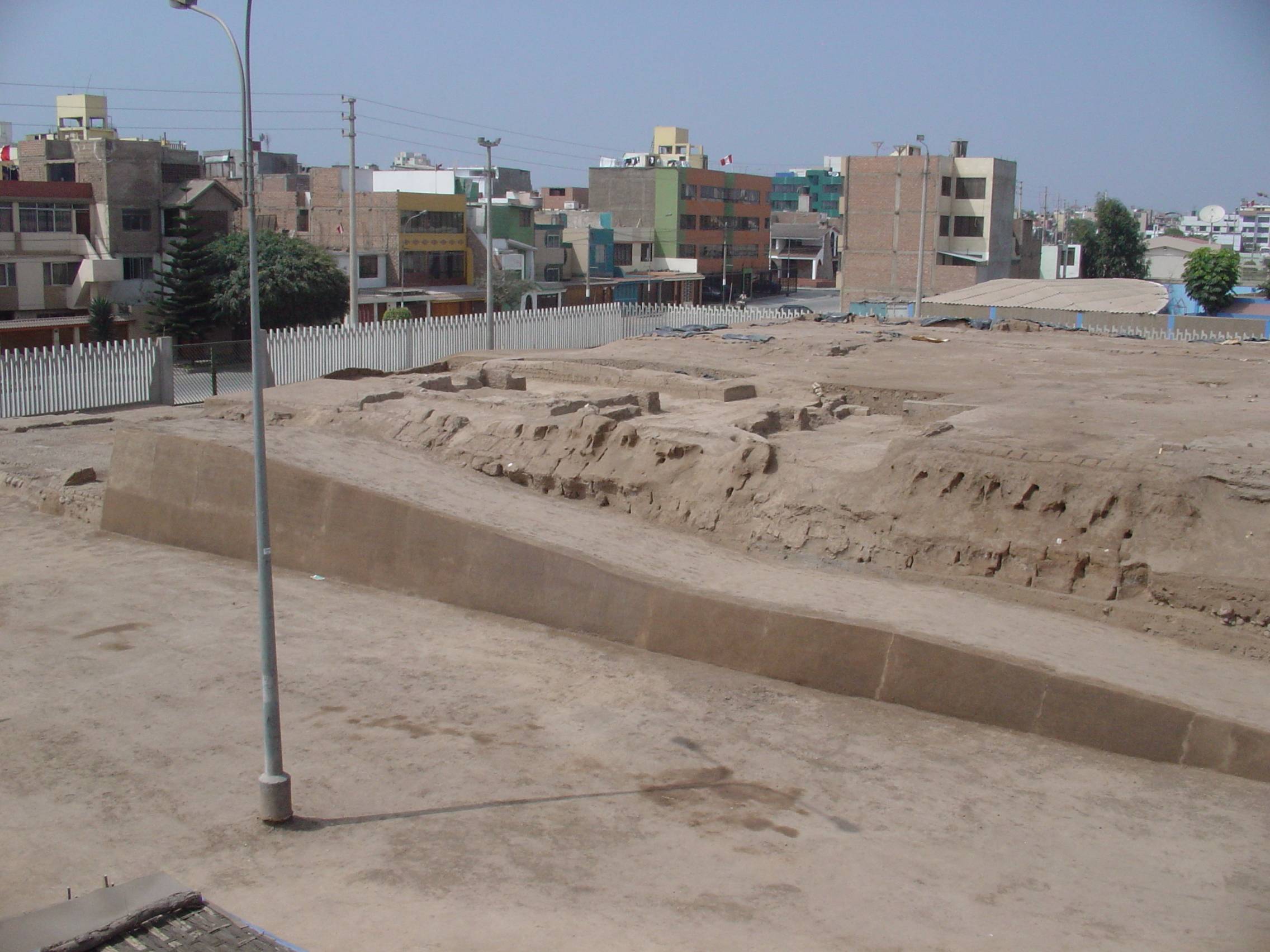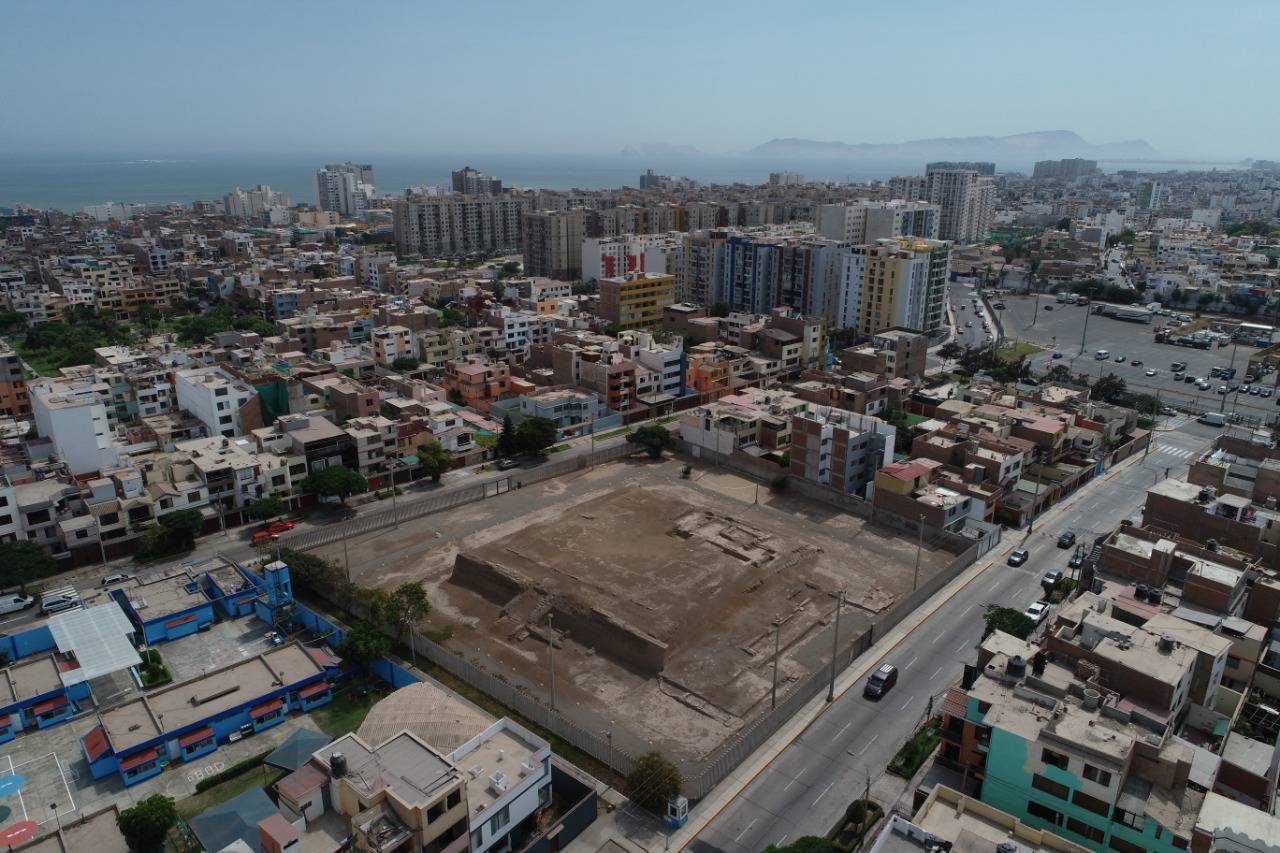Huaca Casa Rosada: A Testament to Lima’s Archaeological Richness
Huaca Casa Rosada stands as a significant archaeological site within the urban landscape of Lima, Peru. Located in the San Miguel district, this site spans approximately 5,300 square meters, encapsulating a rich history that extends from the end of the Middle Horizon to the Late Horizon, and further into the colonial and republican periods of Peru.
Get your dose of History via Email
Location
The site is strategically situated between Prolongación Cusco, Pasaje Rosario Araoz, and Prolongación Ayacucho streets in the San Miguel district of Lima. This positioning places Huaca Casa Rosada at the heart of the city’s bustling urban area, offering a unique juxtaposition of ancient history and modern development.
Historical Overview
Huaca Casa Rosada features a square-shaped structure, measuring roughly 36 meters on each side with a height ranging between 3 and 4 meters. The construction primarily utilizes rammed earth and adobe, forming an elevated platform with access ramps. This architectural style is indicative of the site’s significance during various historical periods, including the Late Intermediate period when it was part of the Maranga archaeological complex under the Ichma Lordship. The specific function of the platform during these times, however, remains unknown.

By the mid-1970s, the site was part of a larger agricultural field, bordered by irrigation ditches to its north and west. These ditches contributed to the deterioration of the lower parts of the huaca. The site also features adobón structures, which were later repurposed to support the construction of the republican-era “Casa Rosada.” This structure was notable for its quincha and wood walls, with materials such as white oak and mulatto oak likely sourced from Guayaquil, Ecuador. Despite being a single-story building, the construction techniques used were typically reserved for higher levels, showcasing the architectural ingenuity of the time.
Decline and Preservation
The “Casa Rosada” remained in good condition until the mid-1980s. However, the urbanization of the surrounding area led to the demolition of the republican house, with its materials repurposed for new constructions. This marked the end of the site’s historical structures as they were known.
On December 4, 2003, the National Institute of Culture (INC) declared Huaca Casa Rosada as Cultural Heritage of the Nation, recognizing its historical and cultural significance. Efforts to preserve the site began in 2004, including fencing, cleaning, and wall consolidation, under the initiative of Salvador Heresi, then mayor of the San Miguel district.
Archaeological Findings
Excavations between 1973 and 1974 unearthed a variety of artifacts, including turned and glazed ceramics, earthenware, and imported fine ceramics dating from the 16th to the 18th centuries. Notably, fragments of French earthenware featuring floral motifs and vitrified ceramics with unique color schemes were discovered, highlighting the site’s extensive trade and cultural exchanges. Further excavations in the early 2000s revealed colonial-republican period structures, including compartments made of rammed earth walls beneath the republican house, offering deeper insights into the site’s historical layers.
Huaca Casa Rosada serves as a testament to Lima’s rich archaeological heritage, encapsulating centuries of history within its structures and artifacts. The site’s preservation and study continue to contribute to our understanding of Peru’s complex past, bridging the gap between ancient civilizations and contemporary society.
Sources:

